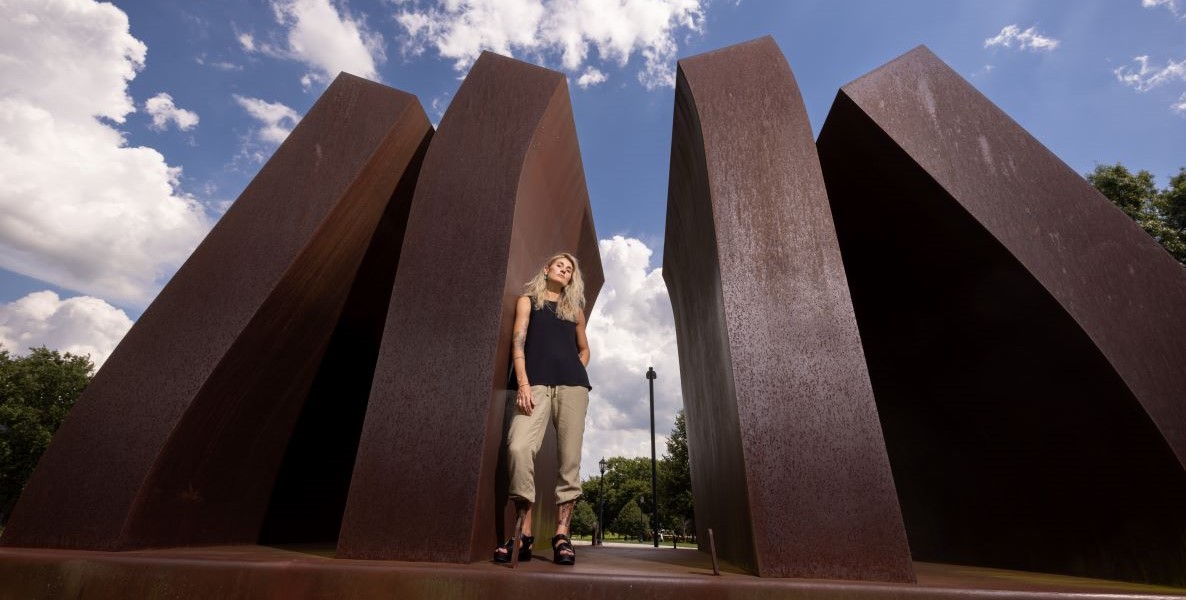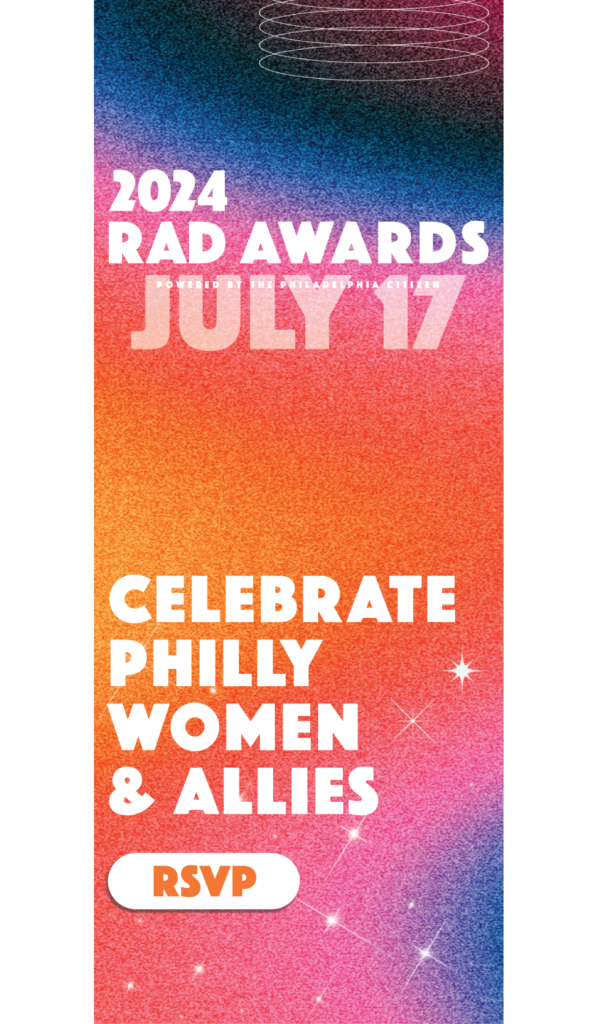The foot. Deborah Barkun, creative director at the Berman Museum of art at Ursinus College in Collegeville, PA, points to something I’d missed when looking at an unframed black-and-white photograph lying on a table before us in the museum: the unexpected bare foot of a man as he stands on a city sidewalk in front of a shop window gazing at rows of fedora hats. It’s a beautiful image by the late Mexican photographer Enrique Bostelmann titled, “El Deseo” (Desire), and part of the new Bostleman retrospective, “Enrique Bostelmann: Apertures and Borderscapes.”

The 1957 photograph commands attention for a few reasons: It’s elegantly composed — and gorgeously printed. The subject is relatable, yet also mysterious. The odd sight of this fully-dressed man and his bare foot in full profile startles and demands closer study. Barkun describes the foot as the “punctum” in that image, using philosopher Roland Barthes’ term for the poignant detail which provokes a strong, personal reaction — and the crackle of human connection.
But human connection is not just the point of this exhibition. It’s also become the point of the venue itself. The Berman Museum opened in 1989 with a gift from the late Philip and Muriel Berman. The Bermans wanted the home of their extensive collection to serve both visual arts students at Ursinus and the community at large. Their mission statement: “Art should be seen; sculpture should be in public places and art should be in the arena of learning …”
Collegeville, population 5,333, isn’t exactly a readily accessible fine arts destination. For decades, the art museum remained a hidden gem, replete with the biggest collection of work by Francoise Gilot, as well as work by Pablo Picasso, Marc Chagall, Roy Lichtenstein, Mary Cassatt, Kara Walker, Cindy Sherman, Hank Willis Thomas, Andrew Wyeth, and works on paper by Rembrandt and Albrecht Durer.
Then, in 2022, a new leader came onboard to reignite and expand the Berman’s mission. Today, Executive Director Lauren McCardel, who previously worked at Tyler School of Art and the Philadelphia Museum of Art, sees the Bostelmann exhibition as a means to expose new audiences, including Latino Philadelphia audiences to the Berman — and, more globally, to demonstrate the value of arts in society.
A Mexican artist you should know
“Apertures and Borderscapes” opens June 18, featuring photographs along the U.S./Mexico border — Bostelmann’s final (and unfinished) project— along with other work from his 40-year career. Bostelmann, who died in 2003, was fascinated during his career with the human experience and how we transgress and prevail. His work remains somewhat uncategorizable, ranging from formally composed evocative moments of everyday people, to groovy manipulated photos that look like scenes from an acid trip, to experimental collaborations with sculptors using photos printed on 3D objects. The artist showed us the human condition, as when he traveled through Latin America documenting impoverished indigenous communities and their horrendous working conditions in his celebrated 1970 photobook, America: un viaje a traves de la injusticia. He excelled in selecting moments that suggested the broader story with a disciplined, formal composition that seduces the viewer’s eye.

Barkun spent two summers in Mexico City, sorting through Bostelmann’s photos with his wife and daughter. One thing that struck her was, she says, “the extent to which his work was playfully about transgressing borders and boundaries. Whether those are the literal borders of the U.S./Mexico border while in Tijuana or whether he was thinking very experimentally about pushing boundaries of a medium that is in some ways literally intangible.” Barkun describes how Bostelmann used photography to paint with light. “His sense of curiosity, this sense of playful experimentation, and limitlessness, as well as this intense sense of humanitarianism that marks his work, is where his legacy and impact begin.”
Bostelmann’s legacy in and impact on the Mexican art scene has been considerable. In the U.S., however, he remains largely unknown. The challenge, therefore, for McCardel and Barkum, is threefold: Entice their regular visitors to the exhibition; attract a core community of Mexican art aficionados to the venue, and bring in an all new cohort of Latino Americans for whom an exhibition like this can be a source of pride.
Getting visitors to the Berman
It’s the second two of these missions that the Berman is most focused on, first by making the exhibition accessible to Spanish speakers, with a bilingual catalog and documentary. Second, by physically getting more people to Collegeville for its variety of programming.
As a small museum with a small budget and staff, McCardel is aware of the “resource game” as she puts it. She is figuring out how to implement their programs to become even more service-oriented and engage and collaborate with community partners. This has taken shape with hands-on workshops, tours, lectures and by hosting yoga classes in the museum, and live podcast transmissions, as well as taking workshops out to partner organizations or offering up their space for lectures and discussions — and even a Halloween costume contest. For the Bostelmann exhibition, they’ve organized shuttles to bring groups from nearby communities for programs. They plan to provide lunch and even childcare if necessary.
The Berman is also building partnerships with local Latinx communities that they hope will endure after the Bostelmann show: ACLAMO (Accion Communal Latinoamericana de Montgomery County); CCATE (Centro de Cultura Arte Trabajo y Educacion); Taller Puertorriqueno; Esperanzo, and the Mexican Cultural Center.
They’ve planned a panel on July 18 with Bostelmann’s wife and daughter, Yeyette and Saskia, and, on July 19, a block party on their front lawn with music by Philly band Guachinangos, a dance floor and dance lessons, food trucks with Latin food, artmaking activities for the family, and a mezcal tasting. On July 26, visitors can learn about Polaroid film and cameras during a hands-on workshop and then enjoy a film on the lawn. On September 20, the museum will host its Latin Jazz Social as a part of the Montgomery County Jazz Festival.
In this way, the Berman is part of a larger cultural shift. In the past several years, all manner of art museums have purposely recast themselves in a clear effort to shed the stereotype that they’re exclusive, high temples to worship, in highly prescribed ways, the cultural objects that have been selected by donors — often by those with high status and high wealth. These days, museums — the Barnes, the San Antonio Museum of Art, Toledo Museum of Art, Chazen Museum of Art — are working to become community places that are democratized and welcoming spaces for all of citizens and to expand mission and to be a place to share, debate, discuss ideas and respond to what are issues and the agenda of local communities in which they are situated.
College museums are especially tasked with education and the exchange of ideas. A coalition of campus museums from Rutgers to Iowa to Oregpon are tackling the issue of political polarization; some have become polling places. A safe, community space is what McCardel envisions for the Berman.

Helping art survive
But McCardel doesn’t view expanding the reach of the Berman just as the right thing to do for underserved audiences. She views it as a matter of fine arts’ survival. She explains, “It’s no longer safe to assume that the arts are a given in our society. Many of us in the field are finding that we need to prove our value in a way we haven’t had to before, and that’s going to require open-mindedness and adaptability.” You don’t have to look far to understand the value of more buy-in for the arts. The sudden closure of University of the Arts and the scaling back of academic programs at PAFA dramatically demonstrate the urgency of rethinking how our society approaches and values art.
The change is a paradigm shift, says McCardel. “Really, we’re putting our core values to the test: What does it mean for art to have a central role in education, in our culture at large? What does that look like? Who does it serve, and how, in practical terms?” She concedes that can be nerve-wracking at times, but thrilling, too, to initiate new ideas and collaborations “as we work to break down perceived barriers around museums, how they function, and whom they serve.”
How can Ursinus do this? For one, in 2023, the Berman received a $245,9000 grant from the Pew Center for Arts & Heritage specifically to engage communities both nearby and into Philadelphia. The funding is helpful, but McCardel knows it will be up to both the museum’s ingenuity and the communities to do their parts.
“We’re not going to catch everyone,” says the director. “We understand that not everyone is going to say ‘this is my jam.’ But if you come to the Berman, you will see something you haven’t seen before. I hope you’ll have a conversation about something or with someone that you might not have had otherwise.”
She is incredibly mindful that siting an exhibition and programming like these are part of what it means to be on a college campus where everyone, not just students, are encouraged to dig into challenging or divisive topics, to engage with new ideas and new people. “What we are trying to create is a safe space to talk,” she says, “On campuses all over the country, there is less and less safe space. But the objects that we have here can provide an opening for connection and dialog and hopefully some kind of call to action.” That sounds like something Bostelmann would agree with.
“Enrique Bostelmann: Apertures and Borderscapes,” June 18-December 15, The Philip and Muriel Berman Museum of Art, Ursinus College, 601 E. Main Street, Collegeville, Pa. Free, www.ursinus.edu/berman
![]() MORE ARTS AND CULTURE FROM THE CITIZEN
MORE ARTS AND CULTURE FROM THE CITIZEN
Lauren McCardel outside Ursinus. Photo by Douglas Benedict




